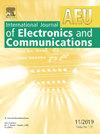基于迭代残差校正网络的ku波段SIW谐振结构ai反设计
IF 3.2
3区 计算机科学
Q2 ENGINEERING, ELECTRICAL & ELECTRONIC
Aeu-International Journal of Electronics and Communications
Pub Date : 2025-08-19
DOI:10.1016/j.aeue.2025.156003
引用次数: 0
摘要
设计具有紧密间隔和广泛分离共振的高性能基板集成波导(SIW)滤波器具有挑战性。因此,越来越需要强大的方法来减少对耗时的电磁(EM)模拟的依赖。在本研究中,开发并验证了基于深度学习的多模SIW滤波器的反设计框架,该框架具有紧密间隔和广泛分离的共振。设计、制作了一系列SIW滤波器,并进行了实验评价。实现了一个三阶段深度学习框架,包括前馈逆模型(FIM)、混合逆-正向残差细化网络(HiFR2-Net)和迭代残差校正网络(IRC-Net)。系统分析了各模型的设计方法和性能。值得注意的是,IRC-Net优于FIM和HiFR2-Net,在5次校正迭代中实现了系统误差减少。实验结果表明,该方法的均方误差(MSE)从0.00191降至0.00146,平均绝对误差(MAE)从0.0262降至0.0209,精度和收敛性得到了提高。提出的框架证明了以最小的仿真成本实现复杂微波滤波器鲁棒、精确和可推广的反设计的能力。这种方法有望促进先进滤波器设计的快速原型设计,并可扩展到微波和毫米波技术中的其他高频元件。本文章由计算机程序翻译,如有差异,请以英文原文为准。

AI-powered inverse design of Ku-band SIW resonant structures by iterative residual correction network
Designing high-performance substrate-integrated waveguide (SIW) filters with both closely spaced and widely separated resonances is challenging. Consequently, there is a growing need for robust methods that reduce reliance on time-consuming electromagnetic (EM) simulations. In this study, a deep learning-based framework was developed and validated for the inverse design of multi-mode SIW filters with both closely spaced and widely separated resonances. A series of SIW filters were designed, fabricated, and experimentally evaluated. A three-stage deep learning framework was implemented, consisting of a Feedforward Inverse Model (FIM), a Hybrid Inverse-Forward Residual Refinement Network (HiFR2-Net), and an Iterative Residual Correction Network (IRC-Net). The design methodology and performance of each model were systematically analyzed. Notably, IRC-Net outperformed both FIM and HiFR2-Net, achieving systematic error reduction over five correction iterations. Experimental results showed a reduction in mean squared error (MSE) from 0.00191 to 0.00146 and mean absolute error (MAE) from 0.0262 to 0.0209, indicating improved accuracy and convergence. The proposed framework demonstrates the capability to enable robust, accurate, and generalizable inverse design of complex microwave filters with minimal simulation cost. This approach is expected to facilitate rapid prototyping of advanced filter designs and could extend to other high-frequency components in microwave and millimeter-wave technologies.
求助全文
通过发布文献求助,成功后即可免费获取论文全文。
去求助
来源期刊
CiteScore
6.90
自引率
18.80%
发文量
292
审稿时长
4.9 months
期刊介绍:
AEÜ is an international scientific journal which publishes both original works and invited tutorials. The journal''s scope covers all aspects of theory and design of circuits, systems and devices for electronics, signal processing, and communication, including:
signal and system theory, digital signal processing
network theory and circuit design
information theory, communication theory and techniques, modulation, source and channel coding
switching theory and techniques, communication protocols
optical communications
microwave theory and techniques, radar, sonar
antennas, wave propagation
AEÜ publishes full papers and letters with very short turn around time but a high standard review process. Review cycles are typically finished within twelve weeks by application of modern electronic communication facilities.

 求助内容:
求助内容: 应助结果提醒方式:
应助结果提醒方式:


